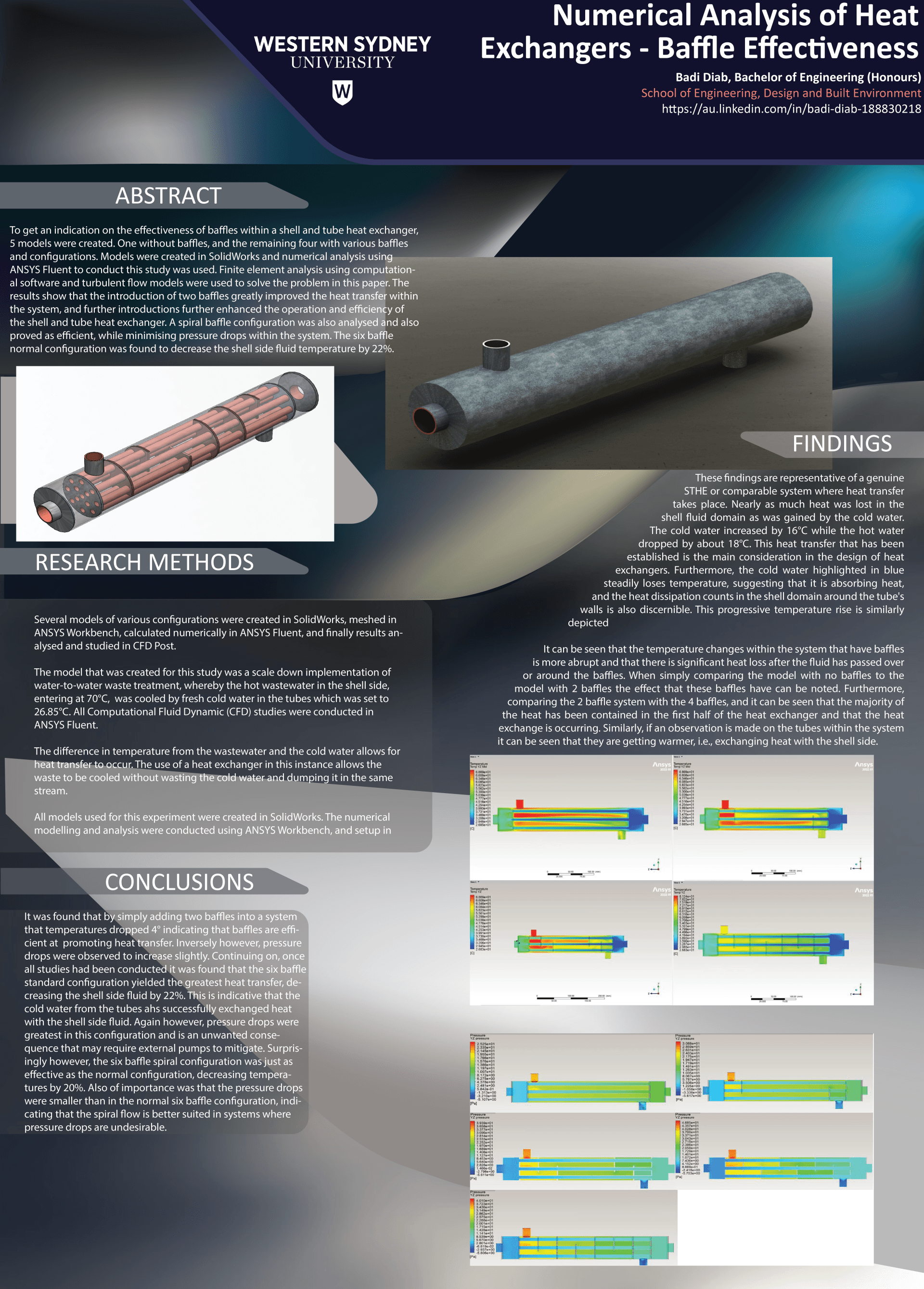
Badi Diab
My journey to university did not come until a little later in life. It was during my tenure as a Boilermaker/Fabricator and exposure to various engineering systems and components on large projects that intrigued me further and drove me to pursue my engineering degree. I have now completed my degree and am fortunate enough to be working on various large-scale projects and approaching these problems from a unique perspective, while still utilising that previous experience to get the problem solved.
Numerical Analysis of Heat Exchangers - Baffle Effectiveness
This project was undertaken to study the effects that baffles have within a shell and tube heat exchanger system (STHE). One model was created, and baffles were gradually implemented to study the effect that they have on velocity, pressure and heat transfer. All STHE models sans spiral configuration that contained baffles had them arranged so that each baffle was rotated 180° to promote the fluid to travel up and down along the length of the shell. The spiral configuration had the baffles rotated 90° to induce a spiral effect on the fluid. The model that was created for this study was a scaled down implementation of a water-to-water waste treatment system, whereby the hot wastewater in the shell side, entering at 70°C, was cooled by fresh cold water in the tubes which was set to 26.85°C. All Computational Fluid Dynamic (CFD) studies were conducted in ANSYS Fluent. It was found that by simply adding two baffles the temperature dropped 4° indicating that baffles are efficient at promoting heat transfer. Inversely however, pressure drops were observed to increase slightly. Continuing on, once all studies had been conducted it was found that the six baffle standard configuration yielded the greatest heat transfer, decreasing the shell side fluid by 22%. This indicates that the cold water from the tubes has successfully exchanged heat with the shell side fluid. Again however, pressure drops were greatest in this configuration and is an unwanted consequence that may require external pumping to mitigate. Surprisingly however, the six baffle spiral configuration was just as effective as the normal configuration, decreasing temperatures by 20%. Also of importance was that the pressure drops were lower than the normal six baffle configuration, indicating that the spiral flow is better suited in systems where pressure drops are undesirable.

